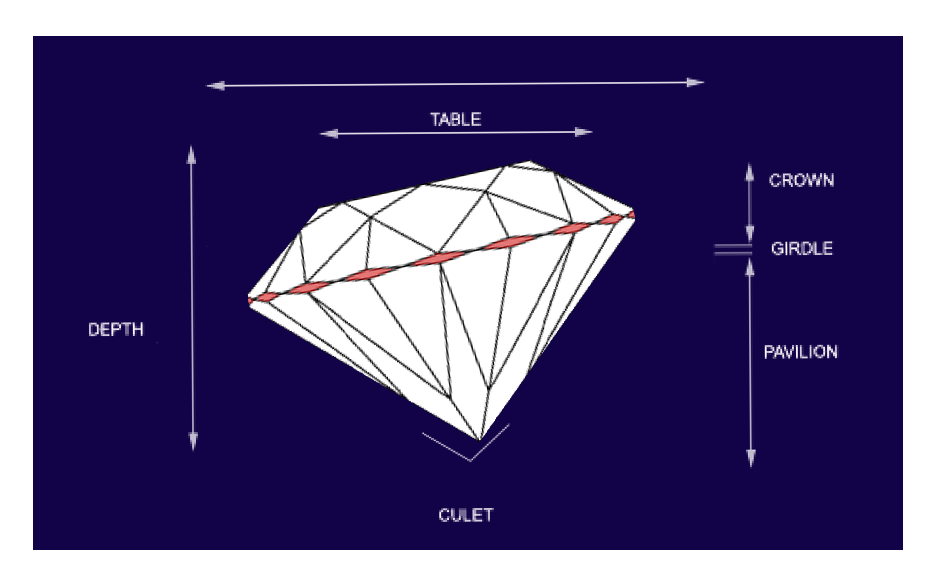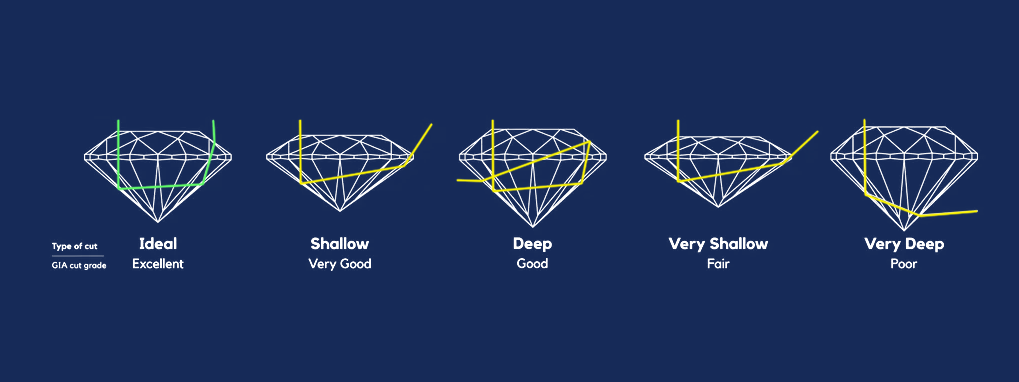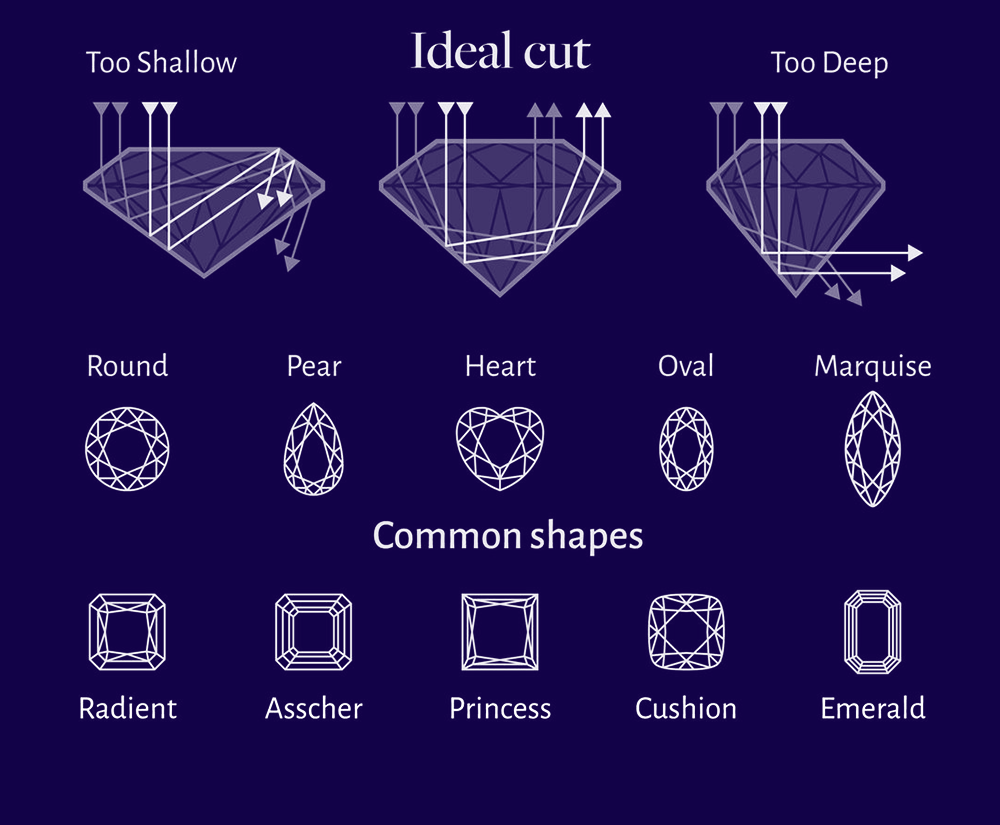If you know this confidential data, you're not a beginner diamond buyer. Professional diamond appraisers don't make this severe mistake in the jewelry shops. But the amateurs do think it's true.
They think the carat weight only defines the price of diamonds.
How far-out is this! The majority of customers come to our office and say, "I want a beautiful diamond." And when we ask about the details, everything they can tell is its carat number and color. That's everything they know!
Our mission is to show the variety of factors that change the price tag of your stone. Each diamond element deserves a separate post. This time, we'll concentrate on the diamond cut. This is one of the most determining elements for diamond value.
For the basic understanding of how different diamond cuts change a diamond, here are 3 main dimensions they affect:
Many people mistake diamond cuts and diamond shapes. We'll dive deeper into this topic a bit further. What you need to know right now is that cuts of diamonds change 2 things in a stone: its sparkling intensity and light transmission. That's why cut quality determines the price of diamonds. Even if the stone you're holding in your arms has the clearest clarity grade and the heaviest carat weight possible, a poor diamond cut will make it look fake and plastic (and surely, not a masterpiece like a Radiohead song about fake plastic trees).

The concept of a diamond cut refers to the specific anatomy of the stone. To understand it better, let's dive a bit closer into the basic elements of a diamond:
You may ask: how the knowledge of these elements can help you in life? Easy! First, you'll understand any information on cuts of diamonds better. Also, you can distinguish the exact look of a brilliant diamond cut, which is the best pick among all the variety of diamond cuts. This top choice (or an excellent cut) has the perfect symmetry and quality of polished diamond facets and a corresponding girdle thickness.
So, the answer to the question "How much are diamonds worth?" centers around the elegance of its proportions.
The brilliant diamond cut is a result of outstanding mastery of its cutter. Professional skills and an exceptional aesthetic sensitivity are the must to make a diamond of perfect symmetry and polish.
Here's the typical procedure of determining diamond cuts:
Distinguishing cuts of diamonds requires laboratory equipment and technical expertise. However, it's important to understand the basics of grading so that you won't get in trouble while judging about types of diamond cuts.

Diamond cuts are not diamond shapes. And the difference between these two concepts is simple:
Different diamond cuts include the variety of possible diamond shapes besides other aspects, like the correlation between design and carat weight of a diamond. That's because a diamond shape changes the proportion of a diamond — and their ratio influences a diamond cut. But this is only a side-effect.
Among diamond professionals, it's common to use a simple 5-stage approach to grading diamond cuts:
Many diamond buyers still consider diamond shapes as certain types of diamond cuts. This category of customers are likely to ask questions like "What is a cushion cut diamond?" or "What is a princess cut diamond?". To address these inquiries, we show the typology of diamond shapes and diamond cuts in the image below.

All the types of diamond cuts change the evaluation of proportions, and the tiniest shift in this dimension changes the value of the stone. The key elements compared here are the width, depth, and table. And their ratios affect the quality of diamond cuts directly.
Among the other aspects that change the price of diamonds, experts always check these 3 parameters:
As it turns, the tiniest details determine how much are diamonds worth. And when it comes to the diamond cut, the concept of beauty is not a subjective one. It comprises two key elements: the optimal depth of cut and the exact size of facets.
A gentle touch of a true professional's hand has its cost. This rule applies to the world of different diamond cuts as well. Among the various shapes available, all the diamond cuts reveal their best in round stones. If you want a perfect stone, go for an ideal cut in this diamond shape.
Please, don't compromise on less when it comes to the quality of your diamond cut!
Choosing a diamond with an Excellent cut grade in the GIA certificate is a fair guarantee of quality. Still, you need an eye of a diamond expert to evaluate whether the proportions of the stone and its sparking are truly exceptional. To get this information, contact Diamond Registry consultants. We'll be delighted to help you make a wise choice!

